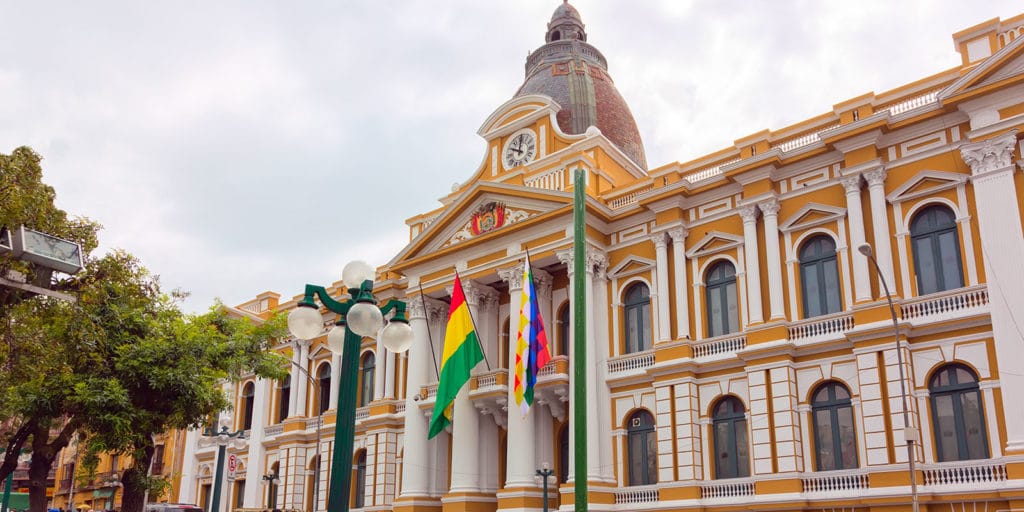Bolivian Independence Day commemorates the signing of a Declaration of Independence from Spain in what is now Chuquisaca, Bolivia on August 6, 1825. This was the beginning of the end of the Bolivian War of Independence.
The next Bolivian Independence Day is Sunday, August 6, 2022.
Bolivian Independence
Bolivian independence is complicated because it took a long time to get free and the countries we know today didn’t exist in the Colonial Period. The region that is now Bolivia was called Charcas. Today Charcas is a province in Bolivia’s Potosí Department (state).
The Bolivian War of Independence lasted for sixteen years from 1809 to 1825.
Latin American independence in the Spanish-speaking countries was inspired by the French takeover of Spain in 1808. The Peninsular War for control of Spain lasted until 1814.
Criollo loyalty (American-born Spaniards) was to the Spanish king. Since there was no longer a Spanish king, Criollos began to organize themselves. At first many were royalists, but gradually the idea of independence took over.
Spanish South America was first ruled from Lima in what is now Peru in 1535. Later the Spaniards established capitals in Bogotá in what is now Colombia, and Buenos Aires in what is now Argentina. To make things easier to understand, we refer to the countries we know today.
Bolivian Independence is complicated by the fact that governance of the region was transferred from the Viceroyalty of Peru to the Viceroyalty of the Río de la Plata (Buenos Aires).
There were many revolts against Spanish rule over the years, but in South America the May Revolution of 1810 in Buenos Aires was the first one that was never beaten back.
Buenos Aires sent three military campaigns to Charcas, but they all failed. There are not many Africans in Argentina today. The Argentines say it is because they were sent to fight the wars in Bolivia. This must be what they meant. The Buenos Aires campaigns devolved into a long guerrilla war which weakened the royalists.
After the armies of Simón Bolívar and Antonio José de Sucre defeated the royalists in what is now Ecuador, Colombia and Venezuela, Sucre led a campaign into Charcas.
The royalists were defeated when the forces of the last royalist general defected and turned on him on April 13, 1825.
The Council of Chuquisaca
Sucre called a council in Chuquisaca for the people of Charcas to decide their future on July 10. They could join Argentina, Peru or become independent. Bolívar wanted Charcas to join Peru.
The council chose independence and signed a declaration of independence on August 6, 1825. This is what we celebrate as Bolivian Independence Day.
Self-governance is not easy. It took decades of political development for Bolivia to be truly governed by Bolivians. Around the world today, we still struggle with the conflict between governance by a strongman, and governance by the people.
But Bolivian Independence ended Spanish control of South America. That’s something all Bolivians can be very proud of.
Bolivia has Two Flags
The tricolor is the national flag adopted in 1851.
The multicolored flag is the Wiphala flag represents Indigenous Andes people. It was created in the 1970s by a rural movement to reclaim the identity of the Aymara people.

